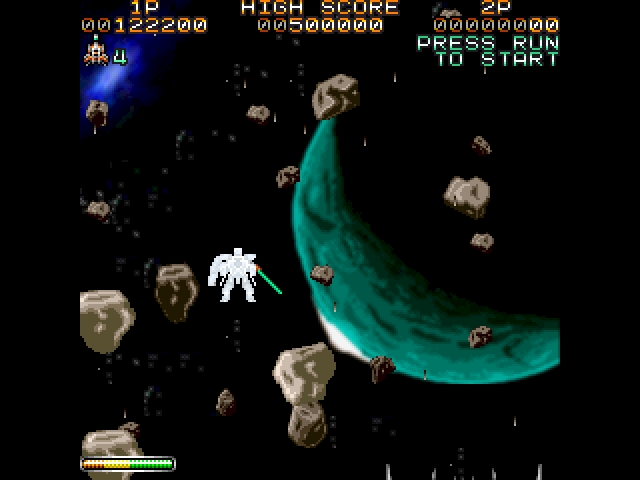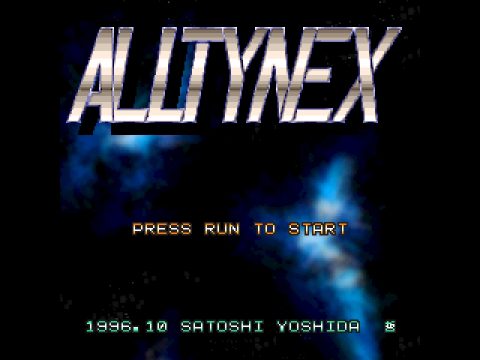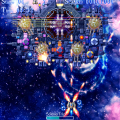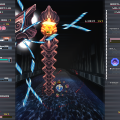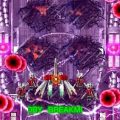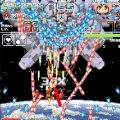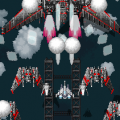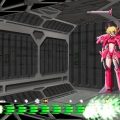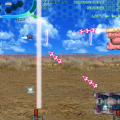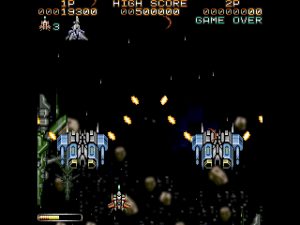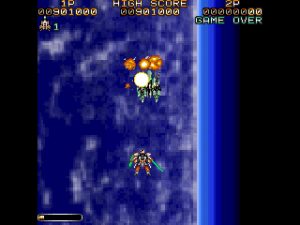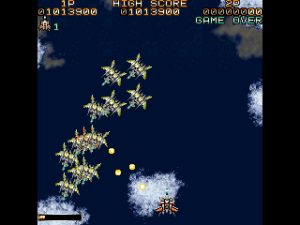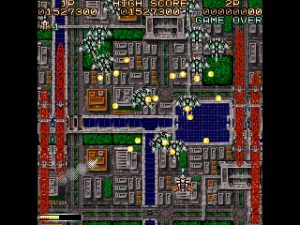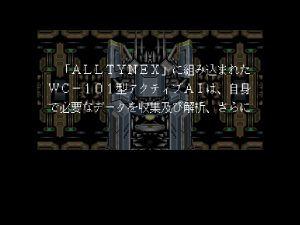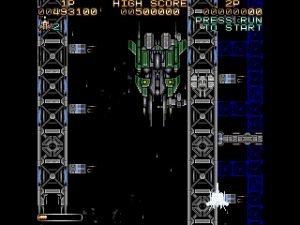- Kamui
- RefleX
- ALLTYNEX Second
- Raid Wind 2: ALLTYNEX
Before ALLTYNEX Second, before RefleX, before KAMUI, the man called Satoshi Yoshida (now known as Jirurun of SITER SKAIN) had released a vertical shoot-em-up called Raid Wind 2: Alltynex. This progenitor of the Tale of Alltynex trilogy is itself technically a sequel: there indeed was a Raid Wind 1 (a NEC PC-9801 shoot-em-up), but the name is the only connection between the two, and the “Raid Wind” part is not even mentioned past the intro sequence. The intro itself, presented in neat looking CG and Japanese text, tells a simple story: there’s the bad computer Alltynex, there’s the human fleet, you go and shoot everything. Pretty much the same deal as in ALLTYNEX Second.
The game system is also very similar to Second, the player’s fighter already had its unique dual combat system with weak but fast rapid/homing and powerful but slow sword/laser combinations. This time though the powerup/health system is radically different – while there is a slowly charging power bar, it only governs the homing/beam laser. The rapid fire gun is instead upgraded via powerup items dropped by orange enemies, which is somewhat similar to KAMUI. While it can get pretty powerful in its own right, the powerup items serve another crucial role – as long as the player has collected at least one, the first enemy hit will not destroy the player’s craft, but instead reduce powerup level to zero. This makes the game relatively forgiving as it is possible, at least on lower difficulties, to just coast from powerup to powerup, relying on the ship’s other, powerful weapons. On Normal and above, however, it will definitely not be enough due to a combination of various factors, especially how sluggish the blade mode is, and how blazing fast enemy bullets get, requiring sharp reflexes and focusing on fighter mode just to survive.
Another thing ALLTYNEX Second had barely changed at all was the stage setup. The five stages go in the same order – space, space station, descent to earth, city, underground base. Even a good number of enemy waves remained unchanged and any particular changes only accentuate how little the remake strayed from the original. For example, the unique assault on the Zoldyzant space cannon here is just a generic “space station” type level, and both Alacran (stage 4 boss) and Zodiac Ophiuchus husk (stage 5 midboss) are understandably absent, replaced by generic boss type craft. In general, all bosses save for ALLTYNEX itself and Satariel, the true final boss, are much easier to defeat and have simpler patterns this time around. Most of the challenge will come from the stages instead, generic enemies can prove very dangerous indeed due to their high density and fast bullets, especially since the blade mode, while even stronger than it is in ALLTYNEX Second, is not the solve-all it was (or will be?) due to miniscule range.
ALLTYNEX looks extremely good for a FM Towns game, almost looking better than KAMUI. The sprites are clean and colorful, there is a lot of sprite animation, and backgrounds are detailed and expressive. All this visual quality came at a significant cost, however – the game is incredibly prone to slowdowns. Even just firing the main gun at higher power can result in significant loss of speed, and it gets worse if the game does something creative like background transition or even just a really big wave of opponents. This occurs no matter how powerful is the system the game is running on (though CPUs faster than 50 MHz will make the game flip between too slow and too fast, and possibly cause other issues). The game’s soundtrack, on the hand, does not suffer from any slowdowns, and once again it is absolutely amazing and catchy.
Beyond the slowdown issue however, ALLTYNEX is one fun, engaging piece of a shoot-em-up that sadly may be a bit tricky to get working nowadays. It might not be the best thing ever, and it’s certainly been made obsolete by its more refined remake, but it’s definitely not just a boring, average doujin game.
